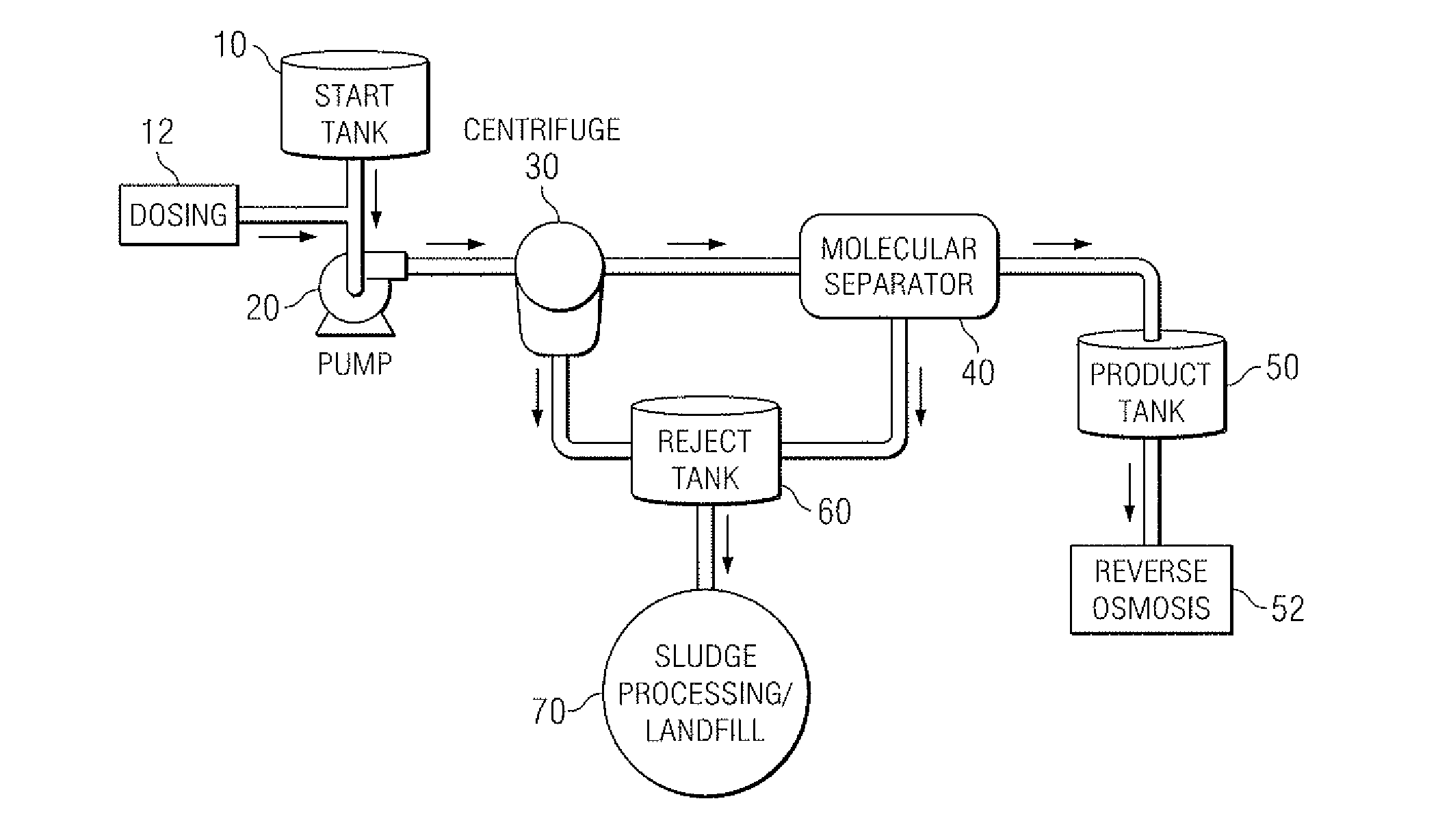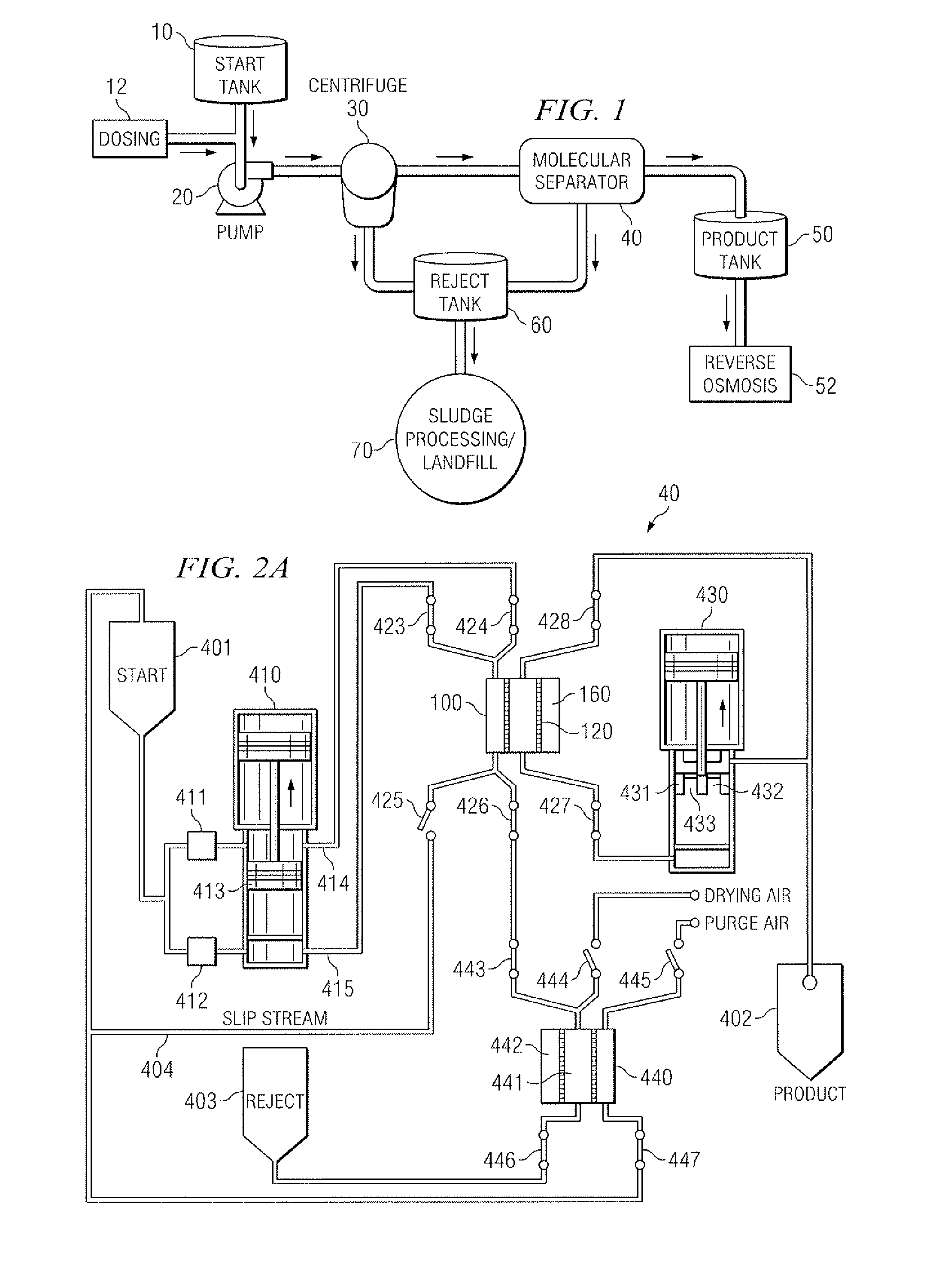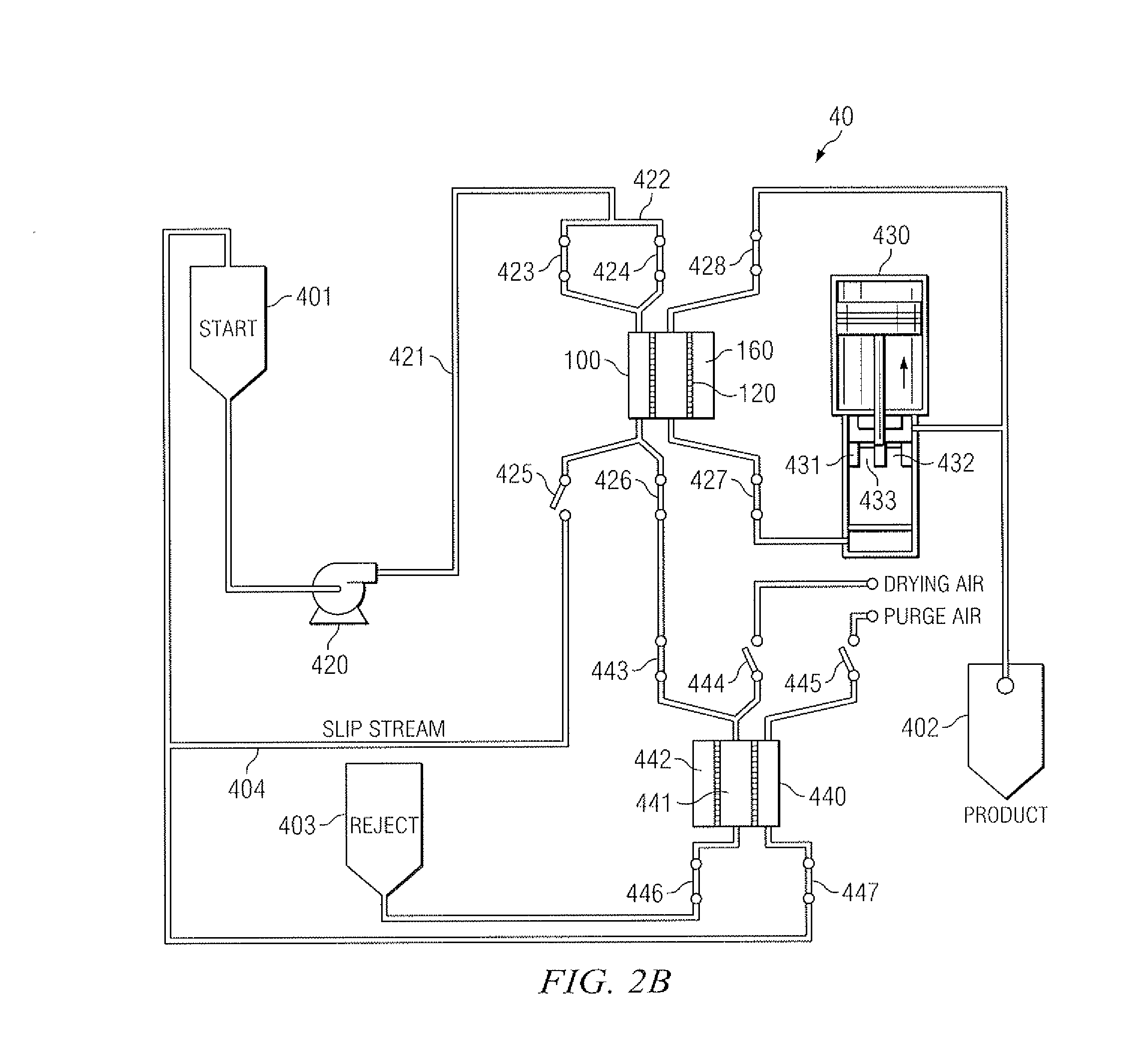Produced water treatment method and apparatus
a technology of produced water and treatment method, applied in the direction of multi-stage water/sewage treatment, separation process, borehole/well accessories, etc., can solve the problems of imposing surcharges and penalties on the entity responsible for the discharge of fluids, contaminated water in fields that can have significant environmental effects, and large quantities of contaminated water. , to achieve the effect of enhancing filtration efficiency, enhancing particle kinetics and cavitation, and enhancing hydrodynamic cavitation
- Summary
- Abstract
- Description
- Claims
- Application Information
AI Technical Summary
Benefits of technology
Problems solved by technology
Method used
Image
Examples
Embodiment Construction
[0033]The present invention is directed towards an improved water treatment system for removing contaminants from water. In one embodiment, the use of hydrodynamic cavitation forces and physics in conjunction with traditional separation media to treat contaminated water is both novel and a significant improvement over existing traditional filtration systems. “Untreated water” is used throughout the detailed description and refers to any water containing one or more contaminants, including, but not limited to “produced water,”“refinery water,”“mining water,” and “pulp / paper wastewater.” As used herein “produced water” is used interchangeably with “untreated water.”
[0034]As used herein, “contaminant” refers to any physical, chemical, biological, or radiological substance or matter that has an adverse effect on air, water, or soil and as a consequence of that impact there is a regulation regarding the discharge of that contaminant into the environment.
[0035]As used herein, “produced wa...
PUM
| Property | Measurement | Unit |
|---|---|---|
| particle sizes | aaaaa | aaaaa |
| size | aaaaa | aaaaa |
| pressure | aaaaa | aaaaa |
Abstract
Description
Claims
Application Information
 Login to View More
Login to View More - R&D
- Intellectual Property
- Life Sciences
- Materials
- Tech Scout
- Unparalleled Data Quality
- Higher Quality Content
- 60% Fewer Hallucinations
Browse by: Latest US Patents, China's latest patents, Technical Efficacy Thesaurus, Application Domain, Technology Topic, Popular Technical Reports.
© 2025 PatSnap. All rights reserved.Legal|Privacy policy|Modern Slavery Act Transparency Statement|Sitemap|About US| Contact US: help@patsnap.com



